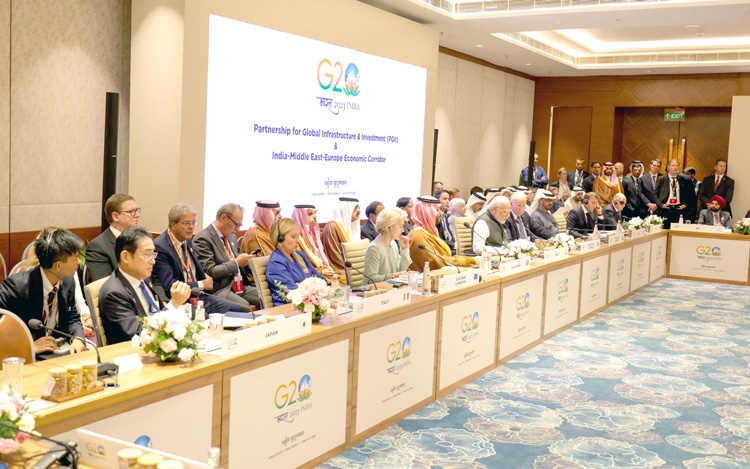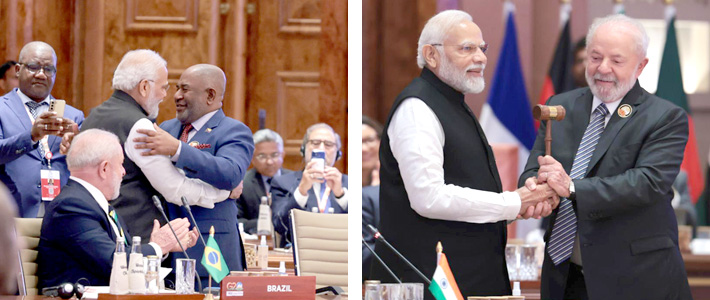INDIAN ARMED FORCES CHIEFS ON OUR RELENTLESS AND FOCUSED PUBLISHING EFFORTS

The insightful articles, inspiring narrations and analytical perspectives presented by the Editorial Team, establish an alluring connect with the reader. My compliments and best wishes to SP Guide Publications.

"Over the past 60 years, the growth of SP Guide Publications has mirrored the rising stature of Indian Navy. Its well-researched and informative magazines on Defence and Aerospace sector have served to shape an educated opinion of our military personnel, policy makers and the public alike. I wish SP's Publication team continued success, fair winds and following seas in all future endeavour!"

Since, its inception in 1964, SP Guide Publications has consistently demonstrated commitment to high-quality journalism in the aerospace and defence sectors, earning a well-deserved reputation as Asia's largest media house in this domain. I wish SP Guide Publications continued success in its pursuit of excellence.
- MoD initiates comprehensive review of Defence Acquisition Procedure 2020, pushes for defence reforms
- G7: The Swansong
- Kalinga Connect: South Asia to Polynesia
- Must Credit DRDO for Operation Sindoor, now what is next for defence R&D?
- The layered Air Defence systems that worked superbly, the key element of Operation Sindoor
- Operation Sindoor | Day 2 DGMOs Briefing
- Operation Sindoor: Resolute yet Restrained
G20 Heralds a New Future
India played host to the world and charted a new course in global geopolitics at a highly successful G20 Summit
 |
The Author is former Chief of Staff of a frontline Corps in the North East and a former helicopter pilot. He earlier headed the China & neighbourhood desk at the Defence Intelligence Agency. He retired in July 2020 and held the appointment of Addl DG Information Systems at Army HQ. |

Former Stanford economist and Noble laureate Paul Roemer famously said that 'a crisis is a terrible thing to waste'. President Xi Jinping did everything conceivable to ruin the G20 summit in New Delhi and undermine the standing and stature of India in the emerging multipolar dynamics of geopolitics. Beijing released the 'standard map' end August, barely a week ahead of two key gatherings -the East Asia Summit in Jakarta and the G20 summit that riled its neighbours. Further, Xi Jinping sent Premier Li Qiang to the meetings instead of attending them himself, underscoring the importance it attached or did not attach to these gatherings.
India's Diplomatic Triumph at the Summit as African Union joins G20, amplifying global voices for Democracy and Development
The map includes all disputed areas that China considers its territory, such as Arunachal Pradesh and the Doklam plateau, which are claimed by India, self-ruled Taiwan, the Diaoyu Islands in East China Sea also claimed by Japan and most of the South China Sea, where Malaysia, the Philippines and Vietnam are among the rival claimants. In the far northeastern corner of China on the border with Russia, it shows Bolshoy Ussuriysky Island, an island at the confluence of the Amur and Ussuri rivers, as Chinese territory, even though the countries signed an agreement nearly 20 years ago to split the island.

If China had intended the new maps to convey its dominant status as the emerging world power it may have had the opposite effect which saw a rare display of unity from the region and beyond. The US State Department called the claims reflected on the map "unlawful". The map put out in print China's predatory and expansionist territorial ambitions leaving no one in doubt. So, an unintended fallout is that US and allies thus far focussed on Russia's alleged expansionism as evident in the Hiroshima G7 Declaration, may have been nudged to rethink their strategy.
India leads the charge for Climate Action with major contributions to Global Climate Fund (GCF)
It is not far-fetched to imagine that the rare consensus achieved in the G20 Delhi Declaration on the Ukraine war which watered down considerably the Bali G20 Declaration barely ten months back may be the most significant fallout of China's map antiques. A crisis was turned into an opportunity. Through deft diplomatic manoeuvring and considerable backroom haggling, a consensuson the summit declaration which appeared elusive even days prior to the summit was achieved with many upshots that add to India's emerging position as the leader of global South. It is also conceivable that India also used its QUAD membership to influence the US and its allies to support its cause and bolster its stature vi-a-vis China.


There were many strategic thinkers and policy honks in the west who have been vocal to point out that Russia had in effect taken many steps to put the cold war era behind, joined the G7 in 1998 making it a G8 grouping and had even applied for NATO membership. It was the US arms lobby which has been behind manufacturing an enemy out of Russia to justify its staggering $850 billion defence budget. Triggering of the Maidan movement in Ukraine in 2014 finally came as the proverbial last straw on the camel's back. Russia was suspended from G8 after it had to annex Crimea to protect its Black Sea fleet. Even after this exit, Russia continued to court Europe, investing and building a ten-billion-dollar Nord Stream pipeline to fuel the industrial growth of Germany and other countries. As Nord Stream II was on the verge of getting operational, the US oil and gas lobby precipitated another crisis to force Russia to embark on what it termed as special military operation to protect the Russian speaking population of Donbas. There is hardly any reasonable evidence of its so-called expansionist agenda to revive the Czarist Empire.
India-Europe linkage defies regional connectivity challenges with a breakthrough Multimodal Transport Corridor
India also took the lead to take up Africa's cause arguing that if the 27-member European Union can be a full-fledged member of G20, so does the African Union representing 55 member states. It helped that the African Union has condemned the recent series of coups reverberating in the Sahel region and suspended some of these countries, calling for restoring of democracy. This would have been assuring to France and the US led West. Thus, despite early opposition, the African Union joined the G20 as a permanent member and was graciously invited to the high table. For India, this is an important step to counter the influence China wields in Africa through its Belt & Road Initiative.

A new organisation called the Global Biofuel Alliance (GBA) was launched, to promote the development and adoption of sustainable biofuels, and set relevant standards and certification. That is a bold step in concert with the International Solar Alliance (ISA), an alliance of more than 120 signatory countries which India spearheaded in 2015. Put together with some announcements for big contributions to the Global Climate Fund (GCF) by the likes of UK which has pledged $2 billion, the New Delhi summit has made stellar contribution to climate action.
With the G20 Leaders' New Delhi Declaration officially adopted, India's measures to push global adoption of digital public infrastructure have received a boost. The three key outcomes, making up three paragraphs of the 83-paragraph document, were the recognition of a global framework, the formation of a global alliance to support financing for further adoption and put India in focus as a leader in implementing digital public infrastructure.


But the real big deal emerging from the G20 summit is the announcement of a multimodal transport and energy corridor between India and Europe via the Middle East that marks a breakthrough in post-Partition India's quest for deeper connectivity with the regions to the north-west of the Subcontinent. Long anxious about China's connectivity projects in the region under its decade-old Belt and Road Initiative, frustrated by Pakistan's refusal to allow overland access and a futile quest for credible connectivity through Iran into the Eurasian landmass, India has finally found a formula to connect to both Arab and Europe challenging Chinese clout in the region.
As the dust settles on the two days of hectic diplomatic activity and charm offensive by India at the newly build Bharat Mandapam with a giant statue of Nataraj lording over its front foyer, one can only conclude that all that hard work has paid off handsomely. The G20 forum may now appear to be more significant in its deliberations and outcomes than perhaps the UN Security Council meetings.





